Common Cybernetic Resources (C\cyb)
A web of links and resources.
“anyone can have their own history of cybernetics, and this one is mine” - Pickering, The Cybernetic Brain
The idea of this short paper was to introduce an array of what I called “Cybernetic Resources” in my most recent post, but it can also be read simply as a bunch of interesting things I've come across in my research into cybernetics. In the intro I wrote:“Resources can be informational or physical, they may be made up of ideas, concepts, models and heuristics; they sometimes constitute machines, devices, books or whatever other physical objects.” This text briefly introduces some of the things I have found helpful in aiding my imagination in considering how 'agents' could organise themselves and the commons effectively, in one way or another.
It might read as a bit of a sporadic list of random things, and it is. My hope is that those who read it will find a few things that they want to look into further. I also want to make clear that I don't endorse or support all of the things mentioned here, nor their creators, but I have found something of value in all of these varied resources which may be of value to others. A secondary purpose is to try to compress as many links and associations into one article as I can, to cover a lot of ground and open up as many lines for further research as I can muster in a few thousand words. You may be familiar with some of them but I hope most of you find something you'd like to investigate further.
This is only a glimpse at a few of the things which have caught my interest, and only touches the surface of the oceanic cybernetic paradigm. It doesn't even reach back further than the 20th century. Apologies if I miss things you see as central (take this as a small sample).
Do leave comments and links with things I haven't mentioned that are relevant. Maybe I'll make a second part some time (or a version which can be edited & added to by whoever?). Hope it has something of interest to you, follow the links (and the book recomendations1 in the notes :).2
Some areas of research & criticism
First, a few areas of research which develop the political and societal impact of cybernetics. Anarchist cybernetics was, to a large extent, my gateway into the cybernetic paradigm. Writers like Thomas Swann, John Duda, Orestis Varkarolis and Jeremy Gross have recently contributed to the application of cybernetics to cooperative and anarchist organisations (here’s a Twitter thread of good articles). Roel van Duijn (founder of Kabouters and member of Provo) discusses political violence by fusing cybernetics and Kropotkin in 'Message of a Wise Kabouter'. The Xeno-feminist, left-accelerationist, and Harroway's Cyborg manifesto are a few commonly sighted and popular texts which draw heavily on the cybernetic paradigm (and manifestos are always fun).
There is work being done by researchers developing the work done by Stafford Beer towards democratic forms of governance. Researchers working in this area include Angela Espinosa, Allenna Leonard and Raul Espejo. Of particular interest to me has been Jon Walker's work applying the Viable Systems Model (VSM) to cooperatives, which was turned into a field guide and used by many organisations since, a few of which will be mentioned later.
Another key entry point into researching cybernetics is its history in Chile and Soviet Russia. I will discuss both of these forays a little more below, but first I want to introduce Alexander Bogdanov's Tektology, which predated the emergence of cybernetics in the US by decades, and it reflects its patterns uncannily. His work and history is fascinating and quite well documented, and has recently re-emerged as a subject of interest to many. It might be the case that tektology is a more appropriate word to signify what I am trying to get at with 'common cybernetics' (c/cyb). I am still somewhat split.
Equally important are critiques of cybernetics, both in terms of many of its contemporary manifestations and its theoretical underpinnings. Perhaps the most frequently mentioned work is Tiqqun's “Cybernetic Hypothesis”, which is well worth reading. This text and others by Tiqqun and The Invisible Committee have informed academic research in wide-ranging fields. Worthwhile criticism of cybernetics has also come from anarchists like Rhiannon Firth and John Preston. Criticisms of the culture that emerged around cybernetics are also vital for understanding the murky history of cybernetics. The work of Fred Turner, particularly his 'From Counterculture to Cyberculture', is useful for gaining a proper understanding of cybernetics and its pernicious influence on Silicon Valley ideology. An understanding of the troubling roots of cybernetics in military strategy and engineering, as well as the history brutal psychiatric practices can be found in Pickering's The Cybernetic Brain.
Cybernetic conceptual tools
I'll briefly introduce a few key concepts in cybernetics which I think are helpful frames through which to understand how things are organised and how we might learn to organise differently. Variety engineering is perhaps the most essential concept to emerge out of organisational cybernetics. It comes from Ross Ashby's Law of Requisite Variety (LoRV) and was masterfully applied to human organisations by Stafford Beer. The principle is easy to comprehend in principle, but its application can be counter-intuitive. Beer's Designing Freedom is a great place to start (audio version available), and many of his other publicly available talks discuss the concept at length.3
The viable systems model (VSM) is a particularly complex model to get your head around, but I have found it to be an extremely powerful tool in understanding how complex system, which we all are, function. The VSM is widely considered Beer's greatest contribution to organisational cybernetics, and for good reason. Based on the structure of the human brain, the VSM produces a general structure which all very complex systems which are capable of surviving conform to. The model can be applied to any kind of complex system whatsoever (ecological, biological, human, etc.) and offers an 'invariant' structure which all such systems conform to.4
After the traumatic experiences in Chile, Beer moved to a small cottage in Wales and developed his second major organisational model, Team Syntegrity (TS). This model was inspired primarily by Buckminster Fuller's work on geometry, and was developed with the hope of ensuring the maximum possible resonance of information between members of a decision-making group. This “maximisation” led to TS being rather difficult to implement, due to a number of constraints5 imposed upon its method of practice, which arguably make the model less useful in practice without significantly relaxing some of the above mentioned constraints.
Moving away from Beer's work, the sociocratic model has recently gained popularity as a democratic method of self-organisation. The books We the People: Consenting to a Deeper Democracy and Sociocracy 3.0 are good introductions, and the former underscores Gerard Endenburg's fusion of cybernetic theory with the participatory principles underpinning sociocracy.
Another concept I feel obligated to introduce here is the idea of stigmergy as a means of understanding the emergent self-organisation of crowds, flocks and swarms, which is essential to understand the behaviour and activity of protests, social movements, uprisings, and so on. Although Heather Marsh does not speak of cybernetics explicitly throughout most of her work, her application of stigmergic processes to humans is an enlightening route into understanding the behaviour and conditions in which mass adaptive collective-action can emerge.
There are two other concepts I'd like to mention briefly before moving on. The first is the redundancy of potential command, originating from Warren McCulloch's work on the structure of the brain. The concept has to do with ensuring that decisions in a system are made by those parts of it which have direct information pertaining to the decision being made. This plays a key role in John McEwan's groundbreaking essay on anarchist cybernetics in 1963, and is tightly interwoven with the central concept of autonomy.
Finally, the notion of distributed systems. Distributed systems can be understood to stand in opposition to the dichotomy between centralised and decentralised forms of organisation, and are essential to understanding potential developments in large-scale self-organisation in the 21st century. Rodrigo Nunes has written two compelling books developing the implications of comparable systems (the first of which is really short and a nice read).
I've failed to discuss many of the most central concepts at the basis on cybernetics, such as viability, homeostasis, autonomy, 1st & 2nd order cybernetics, feedback, autopoiesis, self-organisation, synergy, recursion, emergence, schismogenesis and many others. There are a range of books and videos which can provide background on these ideas and their uses.
Works, groups, events and locations
There are endless people and works they have produced which could be mentioned here. I will discuss only a few which have caught my attention recently. First, I want to mention The Whole Earth Catalogue. In my previous post I used these works as a paradigmatic example of a 'c/cyb resources'. This might not have a good move, since the catalogue and Stewart Brand are rightly considered to exemplify the communalist discourse which led to the emergence of Silicon Valley and technocratic digital utopianism. Such application of cybernetics exemplify some of the most poisonous forms it can take when left in the hands of those who's purpose is profit maximisation. I used the catalogue specifically in the context of it being used as a tool to popularise cybernetic ideas and their application to practical means of self-organisation among people.
A less compromised source is Suzanne Triester's brilliant Hexen 2039, and Hexen 2.0 series (which includes a tarot deck). These varied artworks and productions map out a vast wealth of knowledge concerning the history of cybernetics, particularly its darkest aspects, intermixing with black-ops programs, mind-control experiments, psychic spies and MK-Ultra (some of its other poisonous manifestations). The most disturbing uses cybernetics has been put to must not be shied away from by those who want to use it for good.
Another group who's work I have mixed feelings about is the work of the Cybernetic Cultural Research Unit (CCRU). Nevertheless, it is an important chapter in the history cybernetics and its relation to society at large. The groups members include notable figures who continue to do compelling work. The CCRU's visual, auditory and written productions invoke a powerful aesthetic which have had a powerful effect on me and many theorists and internet frequenters. The CCRU's key contribution to cybernetics was to affirm positive feedback as an object of theoretical study and philosophical allegiance. They were right to point to the pathologisation of positive feedback in the eyes of the earlier 'first-order' cyberneticians, and they investigated the societal and philosophical implications of positive feedback on contemporary society (among many other things..), which had until then been largely neglected.6
Moving into more academic territory, the above mentioned VSM is one of the most useful and generally applicable models within cybernetics, it is also perhaps its most popularly discussed within human organisational and political contexts. Looking over Beer's three books on the subject, or the multiple elucidating lectures he gave on the topic, describe its structure clearly, but many people do not have the time to commit 10s of hours to mastering a complex model. I have become increasingly interested in alternative formations and representations of the model which articulate its structure clearly and in an easily applicable manner. There are several variations of the VSM which cannot be linked here as they are part of my current research project and are not yet ready for publication. I have managed to find several alternative articulations of the VSM structure, aimed at different kinds of people who work in various kinds of organisations. I look forward to being able to describe these models in greater detail.
On more familiar ground, there are a number of decent videos on the internet which outline the VSM, by Beer himself, Mark Lambertz (who also has an interesting website) and Javier Livas Cantu (who knows the model well but also smuggles in bizarre laisse-faire capitalistic ideology in his videos, so watch with care).
Another fantastic effort has emerged from Shaun Kilkelly and Kyle Thompson's General Intellect Unit podcast (a generally incredible resource for anyone interested in organisational cybernetics). They produced a lengthy series doing a deep dive on Beer's Brain of the Firm (the most comprehensive book on the subject), and have more recently started their own VSRU, which aims to support political organisations in putting the model into practice.
Metaphorum is the most active group specifically studying and extending Beer's work. They run lectures, discussions and events about his legacy and have a range of speakers who develop aspects and applications of his works. Many of the lectures and deeply informative and timely, and are conveniently posted online. The group also produced a illustrated book recently which does a great job of introducing the basics of the VSM in the most clear and simply illustrative language.
Cybernetics has always been as interweaved in art as it is in science. The Cybernetic Serendipity exhibition of 1968 is a landmark case of cybernetic art being put on display for a wider audience. There is a bunch of footage and photos from the event available, and though many of the devices are dated and rudimentary, it still remains a fascinating learning experience to consider how some of these devices were conceived of and constructed.
While on the subject of art, Brain Eno has had a deep interest in cybernetics since he read the “Brain of the Firm” (Stafford Beer, 1972). He says this book directly inspired all his music since then, particularly his ambient works, generative music and Oblique Strategies project.
There are also a number of examples of cybernetics being incorporated into forms of social organising which have nothing to do with computers and digital technology. The School for Designing a Society was set up in the 1991 by Herbert Brün (notable composer and cybernetician) and others, to work alongside teachers, performers, artists and activists by experimentally producing temporary living environments.
Another 'low tech' community who's self-governance is substantially influenced and inspired by cybernetic design is the Cloughjordan ecovillage, based in Ireland. They have spent many years using the VSM in a participatory, democratic group of people who live, work and govern their community together. Papers have been written on this project by Angela Espinosa. Suma is another long-standing cooperative organisation which implemented the VSM for many years, and later transitioned to a sociocratic system.
Finally, a few experimental and somewhat utopian architectural projects from the 1960s. Like so many cybernetic endeavours, these projects did not come to fruition, but they leave provocative examples of how a cybernetic methodology can be imaginatively applied to buildings and spaces.
The first is a Fun Palace, designed by Cedric Price with the assistance of Gordon Pask and his 'Fun Palace Cybernetics Committee'. The idea was to design an amusement park which could be constantly reassembled and augmented by enormous sliding cranes, which carried shipping container like units which fitted into each other like Lego. Pickering's The Cyberentic Brain has a good summary of the project.
A series of similarly utopian (or dystopian?) projects were conceived of in Russia during the same time. Jerzy Rosolowicz's Neutrdrom, VAL's Heliopolis Project, Dvizhenie's Cybertheatre are three experimental architectural ideas which provoke widely different reflections on the impacts of cybernetics and the society it brings about.
Technologies
Finally, I want to briefly draw attention to a few examples of technical cybernetic systems which have been developed towards different ends and at different scales (from the work-room to the state). As with the rest of this article, what I include is only really a random smattering of examples which have stuck in my mind as interesting resources worth exploring, extending and remixing.
Cybernetics was cast out during the Stalinist era in Russia, painted as a idealistic American pseudo-science. It was heavily marginalised until years after, where under Khrushchev it was gradually reincorporated into acceptable communist science, leading to Glushkov, Kitov and others working to develop the OGAS project in the 1960s, which sought to develop a cybernetic system for controlling the whole soviet economy recursively. The project was disliked by the existing bureaucratic powers and its funding was cut in 1970, leading to the projects failure. Parts of the system were later used in piecemeal, and Glushkov proposed another comparable project, which similarly failed.7
Probably the most well known state-level dance with cybernetics was Project Cybersyn in Chile during Allende's leadership in the early 1970s. The project was ended before much of it came to fruition due to a CIA coup which murdered Allende and led to the rise of Pinochet for the next 17 years. The project was split into several sub-projects: CyberFolk, CyberNet, CyberStride, the Opsroom and the CHECO Project. Eden Medina's book Cybernetic Revolutions is undoubtedly the best resource to begin with in order to examine this piece of history more closely.
Other experiments in the Amazon, Czechoslovakia, Mexico, Venezuela and elsewhere were adopted and experimented with but there is far less documentation about them (that I am aware of).
Bret Victor is another figure whose politics I don't endorse but who's ideas might be reappropriated and adapted towards common ends. “Seeing spaces” extend some of ideas presented in Beer's Ops room (mentioned above). A seeing-space is a group work-space for developing a creative project collaboratively, able to represent ideas through various visual means, and alter those representations as a group in real-time. Such rooms represent a high-tech way in which spaces can be designed to facilitate a better collaborative context. What is missing (from the perspective of c/cyb) is the accessibility and ease of developing such spaces. Directing such settings towards the common would involve making them lower-tech, DIY, improvisational and nomadic.
Penultimately, I want to mention and draw attention to a few emerging soft and hardware projects which are at different levels of completion. These remain quite speculative tools which offer potential configurations for facilitating different ways of organising cybernetically from below.
GetGee is a project led by Heather Marsh (mentioned above), who was the editor and chief of Wikileaks Central and wrote several fascinating and uncompromising books about social and political organisational, which I think deserve more attention. GetGee aims to create a transparent, secure space for journalists and researchers to share and get reliable information from peers, facilitated by a trust system which is controlled directly by the user.
New technologies like DAO (decentralised autonomous organisations) and DisCOs (distributed cooperative organisations) are interesting technologies worthy of rumination on their possible uses. Projects like the MetaCurrency project, Commons Engine, the Economic Space Agency and Holochain are all worth investigating.
Holochain in particular (which emerged out of the MetaCurrency project prior even to Satoshi’s revolutionary whitepaper) are developing a software architecture which could revolutionise not only the domain of blockchain adjacent technologies (Holochain isn't blockchain) but far more importantly the ways in which communities can use, own and control digital systems in ways which are currently impossible. The current inaccessibility and impracticality of these technologies limits their usefulness in current year, but as they (or comparable projects) become more mainstream and matured over time self-organising groups will benefit from understanding the context from which they will inevitably emerge.
The final imaginative resource I want to draw attention to it Aurora Apolito's proposal for a coordination system for scaling anarchist communist organising through the use of integrated information theory (IIT). I don't have the expertise to assess the technicalities of this proposal, and I am open to its critiques as its proponents, but it take a big discursive step which open up valuable new ways of thinking about self-organisation at scale.
The resources introduced here should all be approached critically and with scepticism, we should consider why many of these projects failed, and attempt to anticipate the ways in which the others might. These are resources for both forming critiques of cybernetics as it has been and for imaginatively articulating cybernetics as it could be. Such resources should be stretched and transformed into forms which might best serve our common interests, or fought against if they do not. I hope for this article to function as a jumping off point for those with interest in considering cybernetics and their application to our common ends. Check the links, comment stuff I've missed, explore and reinvent.
Cybernetic history:
The Web of Life - Frizof Capra
The Cybernetic Brain - Andrew Pickering
Cybernetic Revolutionaries by Medina
Molecular Red: Theory for the Anthropocene - McKenzie Wark
The Nature of the Machine and the Collapse of Cybernetics: A Transhumanist Lesson for Emerging Technologies - Alcibiades Malapi-Nelson
From Counterculture to Cyberculture: Stewart Brand, the Whole Earth Network, and the Rise of Digital Utopianism - Fred Turner
Rise of the Machines - Thomas Rid
How We Became Posthuman: Virtual Bodies in Cybernetics, Literature, and Informatics - Katherine Hayles
The Information: A History, a Theory, a Flood - James Gleick
Cybernetic concepts books:
Designing Freedom - Stafford Beer
Anarchist Cybernetics - Thomas Swann
The Cybernetic Hypothesis - Tiqqun
The Human use of Human-beings - Norbert Wiener
Binding Chaos - Heather Marsh
Hexen: 2039 - Suzzanne Triester
Message of a Wise Kabouter - Van Duyn
Xenofeminism - Helen Hester
Beyond Dispute - Stafford Beer
Reinventing Organisations - Frederich Laloux
Think before you Think - Stafford Beer (edited by David Whitaker)
VSM book recommends. Some are tricky to get hold of.
Brain of the Firm - Stafford Beer
Heart of Enterprise - Stafford Beer
Diagnosing the System for Organizations - Stafford Beer
VSM cooperative guide - Jon Walker
A Complexity Approach to Sustainability: Theory and Application - Jon Walker & Angela Espinosa
Issues with Team Syntegrity’s ease of use include: (1) specified number of discussion members, (2) specified number of discussions, (3) specified number of roles, (4) specified length of time required, (5) several day process required, and perhaps most problematically (6) the model is patented by Malik Consultancy (one of Beer’s most confounding decisions).
CCRU book recommends
#Accelerate: The Accelerationist Reader - Robin Mackay
Fanged Noumena: Collected Writings, 1987-2007 - Nick Land
Ccru Writings 1997-2003 - Ccru
Soviet cybernetics books
How Not to Network a Nation: The Uneasy History of the Soviet Internet - Benjamin Peters
Cyber-Proletariat - Nick Dyer-Witheford
Cyber-Marx - Nick Dyer-Witheford
The People’s Republic of Walmart: How the World’s Biggest Corporations are Laying the Foundation for Socialism - Leigh Phillips


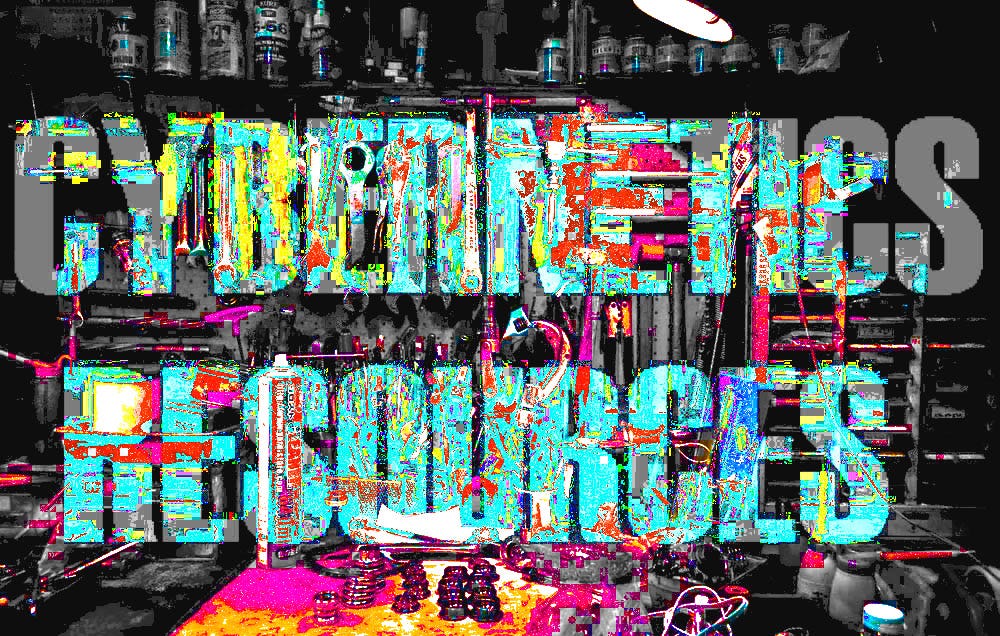
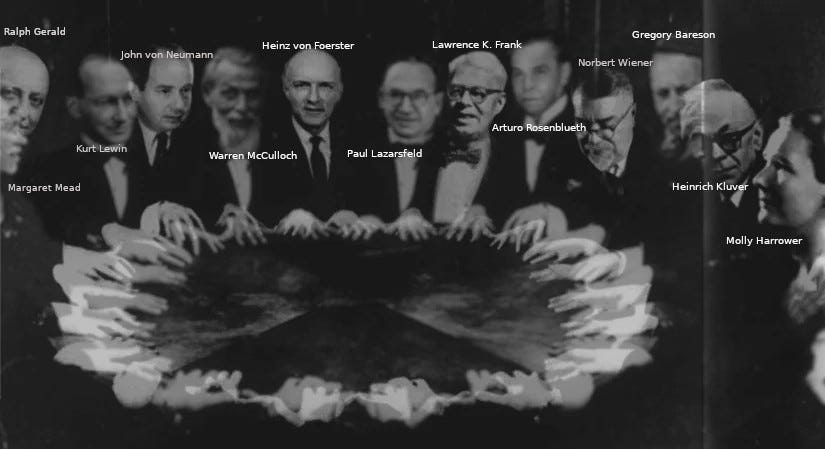
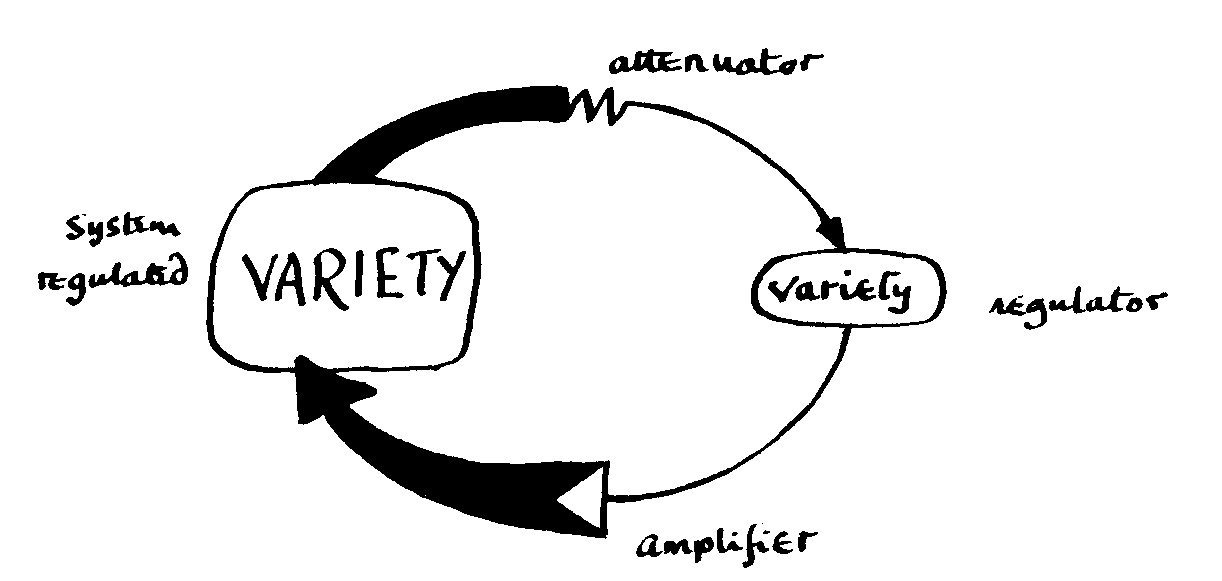
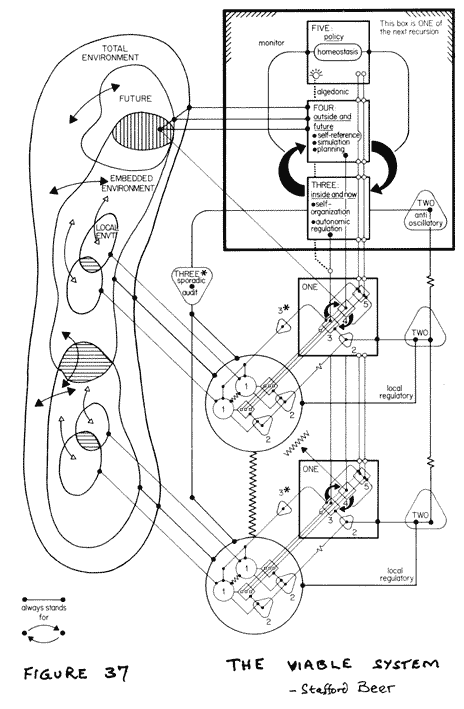
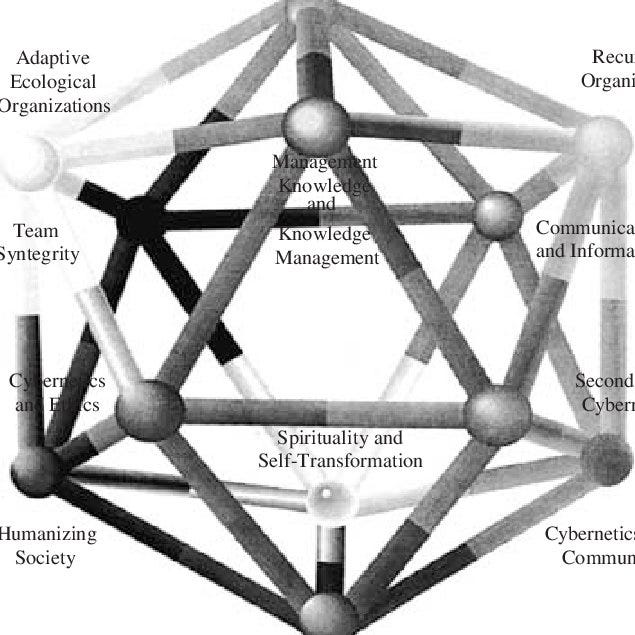


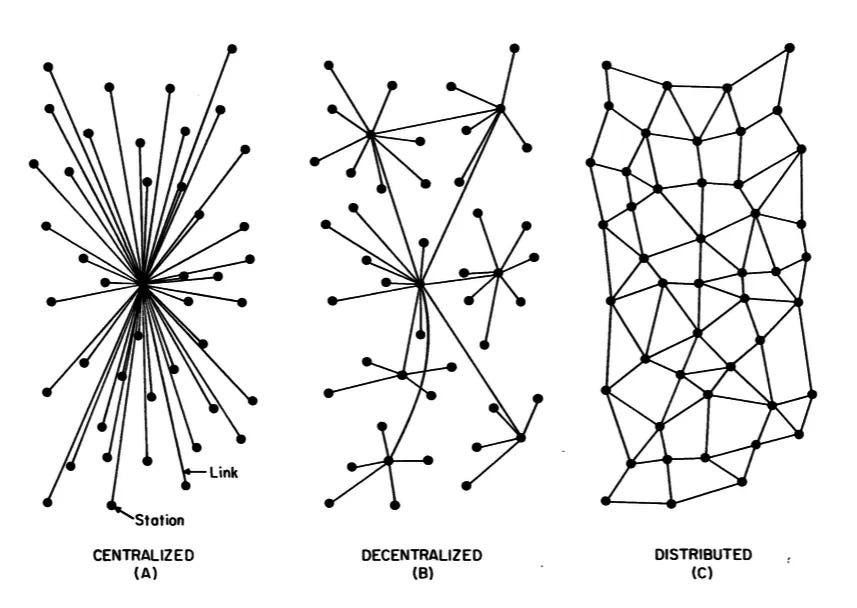

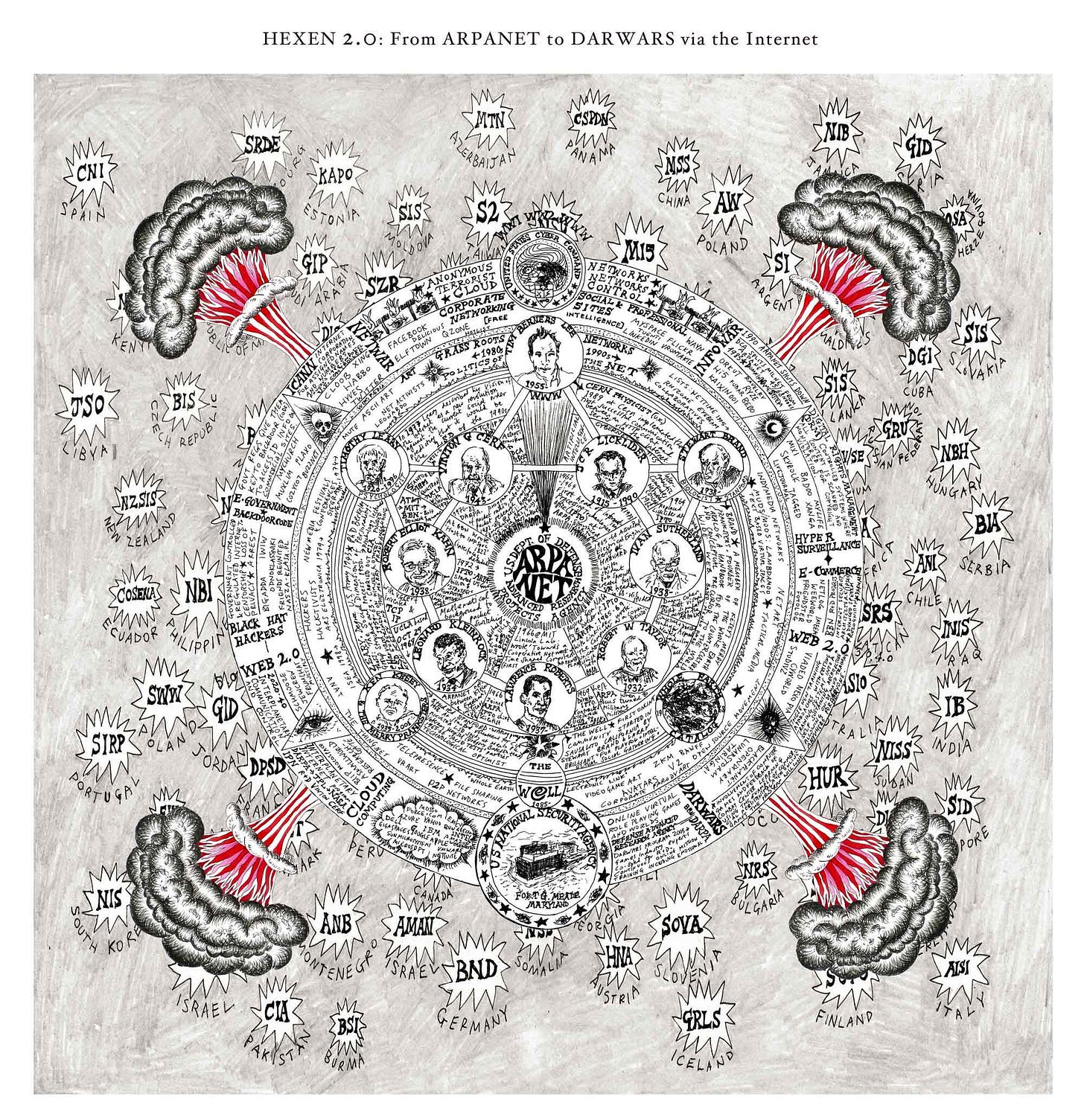
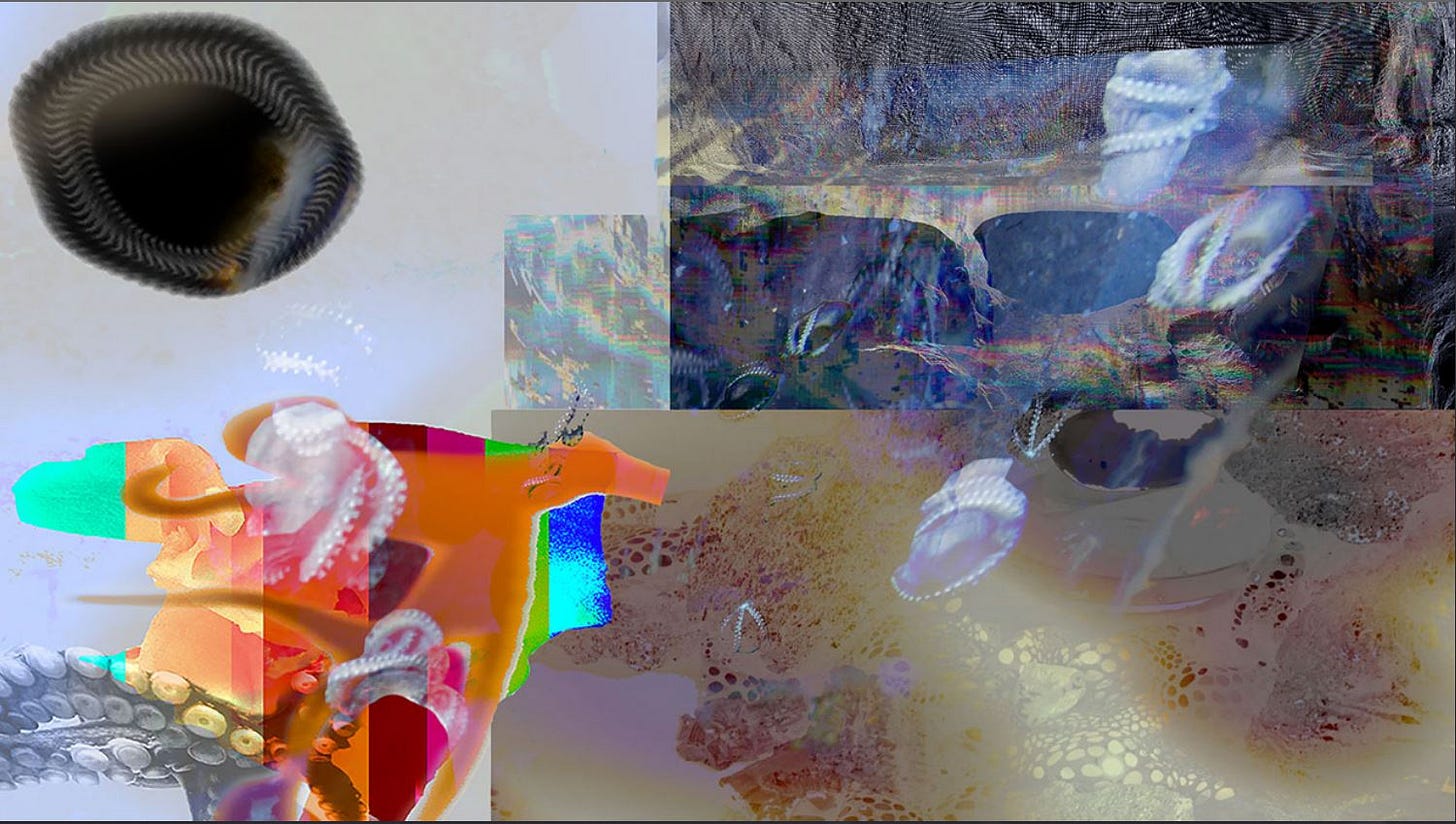
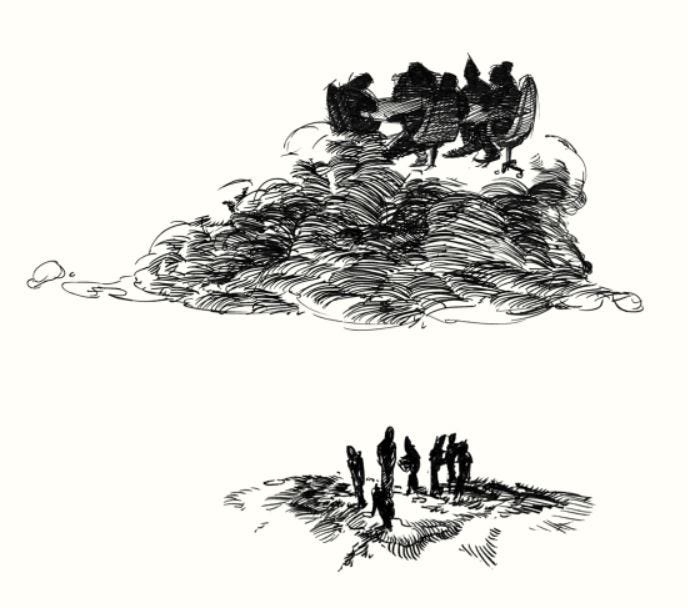
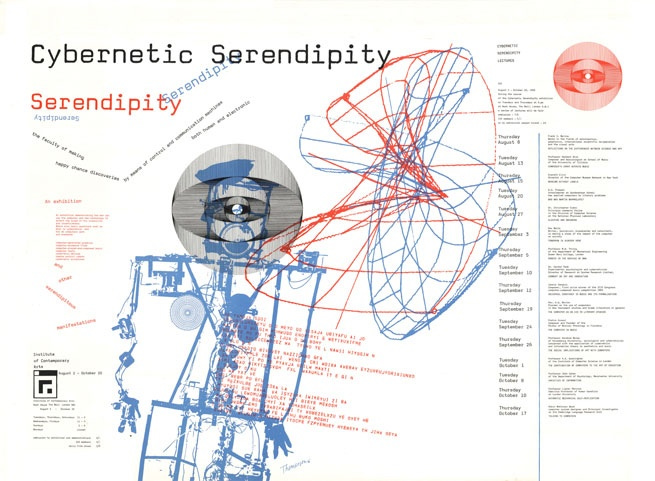




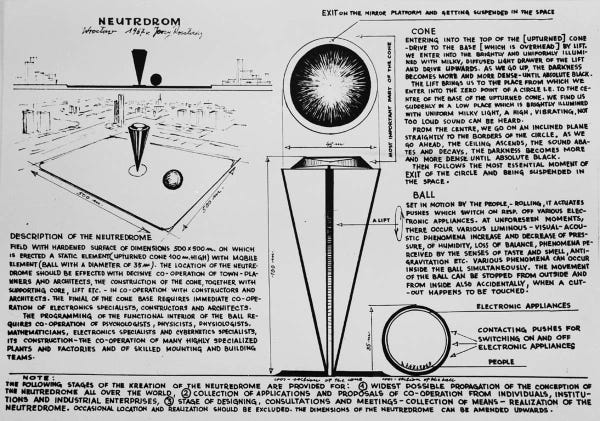
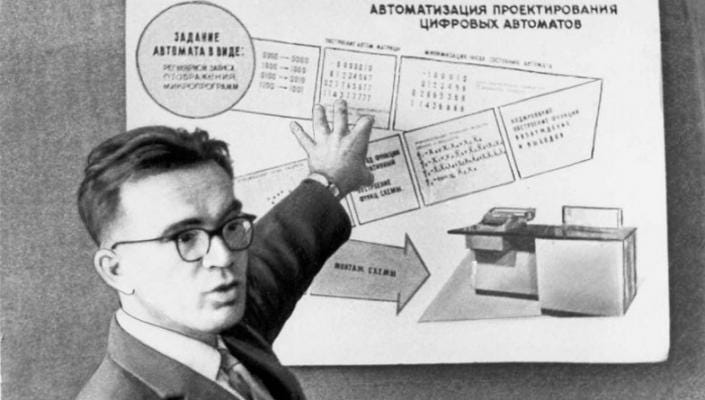
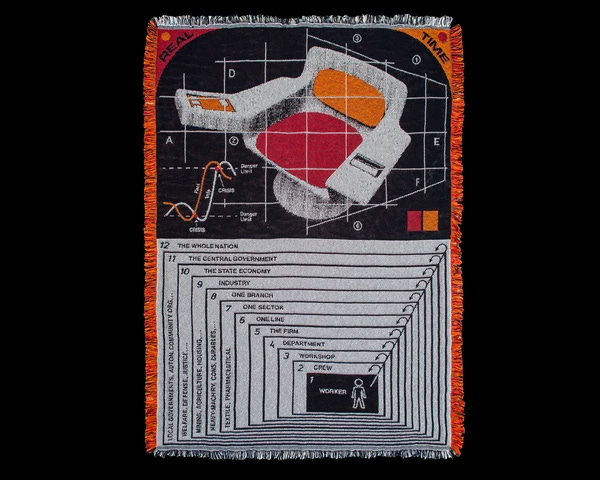
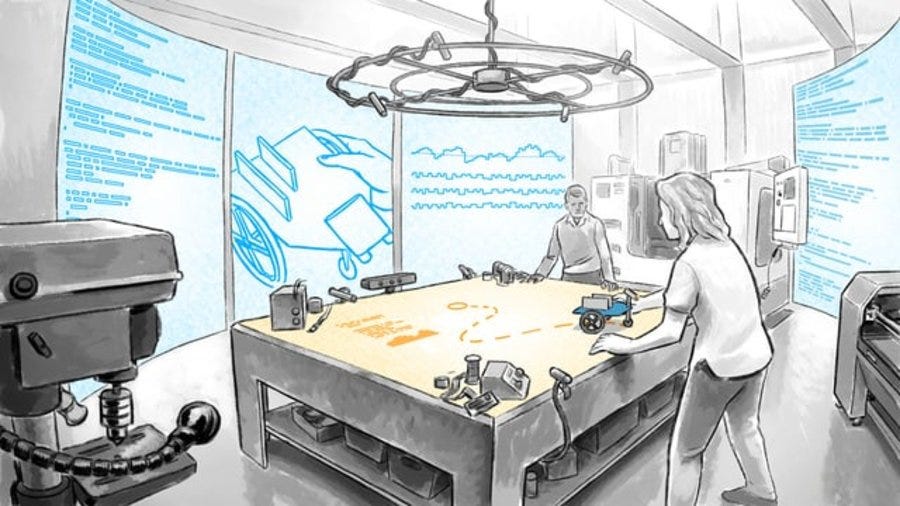
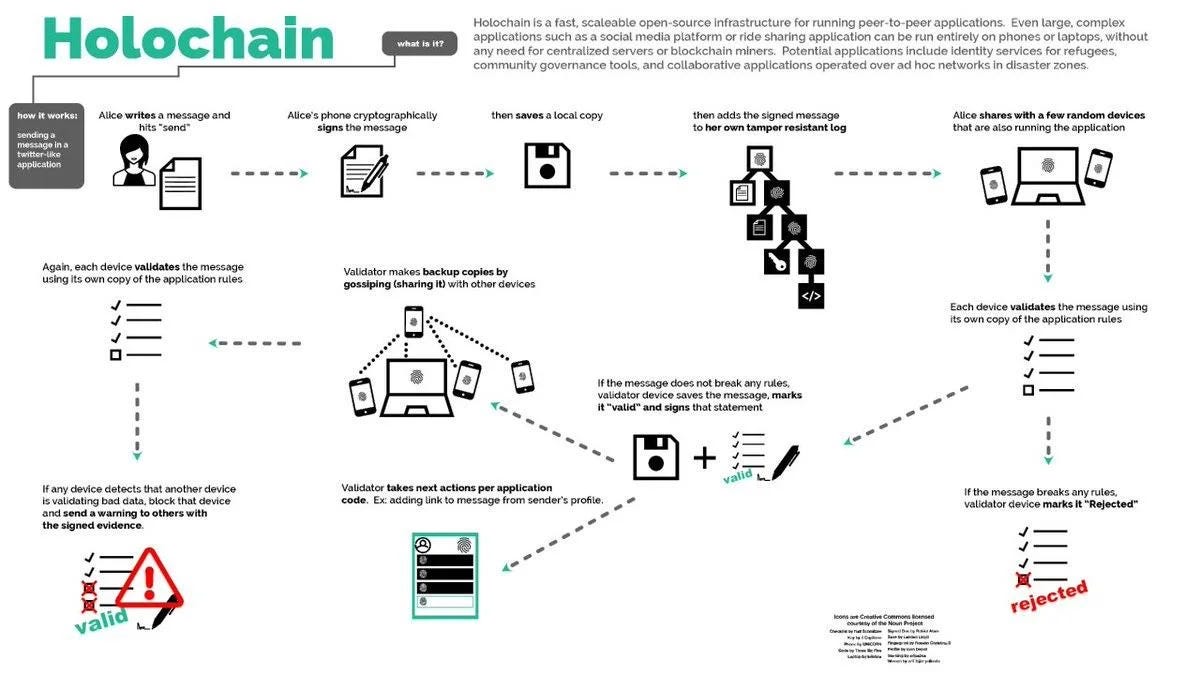


Very useful, thanks for this.
I'd be really interested in hearing your thoughts on the cybernetic potentials of blockchain based systems, especially DAOs. Holochain is still not in production so it still feels a bit early to be talking about it too much and DAOs are already up and running on blockchains and not on Holochain.